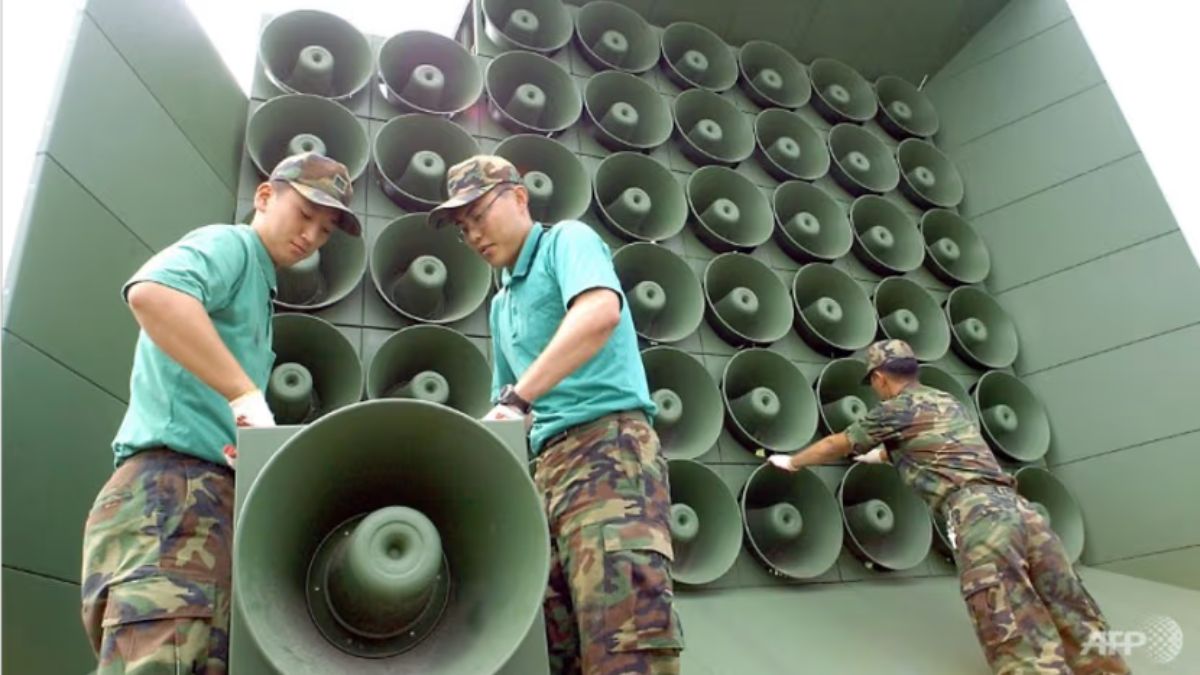Tensions between North and South Korea have escalated once again, this time around a provocative exchange of loudspeaker broadcasts and balloon campaigns across the border.
What initially began as South Korea’s retaliation for over 1,000 balloons filled with trash and manure sent by the North over a couple of weeks has now turned into a battle of loudspeakers, reminiscent of a Cold War-style psychological warfare.
South Korea’s military on Monday said it’s detecting signs that the North is installing its own loudspeakers along their heavily armed border, a day after it blared anti-Pyongyang propaganda broadcasts over its speakers for the first time in 11 years.
As the rivals engage in this loudspeaker warfare, concerns over potential military responses and the impact on diplomatic negotiations over North Korea’s nuclear ambitions loom large.
The loudspeaker battle
The conflict began when South Korea on Sunday resumed broadcasting anti-North Korean propaganda through loudspeakers in border areas which reportedly included news, criticism about North Korea’s government, and South Korean pop music. The move was in response to North’s recent balloon campaign.
Hours later, Kim Yo Jong, the powerful sister of North Korean leader Kim Jong Un, issued a stern warning, calling the South’s actions a “prelude to a very dangerous situation.” She threatened that the North would retaliate with a “new response” if the broadcasts continued and urged the South to stop civilian activists from flying anti-North Korean propaganda leaflets across the border.
“I sternly warn Seoul to immediately case its dangerous activities that would further provoke a crisis of confrontation,” Kim Yo Jong said through North Korean state media.
Impact Shorts
More ShortsLast week, a South Korean civilian group led by North Korean defector Park Sang-hak said it launched 10 balloons carrying 200,000 anti-North Korean leaflets, USB sticks with K-pop songs and K-dramas, and $1 bills.
South Korean media reported another activist group also flew balloons with 200,000 propaganda leaflets toward North Korea on Friday.
Responding to the North’s warning, South Korea’s military spokesperson, Lee Sung Joon, acknowledged the heightened verbal threat but assured that the South was prepared to defend itself. He emphasised that the broadcasts were conducted in sites where soldiers had sufficient protection and could swiftly retaliate if attacked.
“(We) don’t think that they could provoke us that easily,” Lee said during a briefing Monday.
The Joint Chiefs of Staff didn’t specify the border area where Sunday’s broadcast took place or what was played over the speakers. It said that any additional broadcasts are “entirely dependent on North Korea’s behaviour.”
Kim Yo Jong claimed the North used about 1,400 balloons to drop 7.5 tonnes of trash over the weekend adding that North had initially planned to halt its balloon launches on Sunday but decided to send more because the South restarted loudspeaker broadcasts.
History of provocations
Well, this isn’t the first time that tensions have flared between the two Koreas over loudspeaker broadcasts and balloon campaigns. In 2015, when South Korea resumed loudspeaker broadcasts after an 11-year hiatus, North Korea responded by firing artillery rounds across the border, leading to a brief exchange of fire, according to South Korean officials. However, no casualties were reported.
The South withdrew loudspeakers from border areas in 2018, during a brief period of engagement with the North under Seoul’s previous liberal government. However after Kim Jong-Un-led country’s balloon campaign largely irked the South, it suspended a 2018 agreement to reduce hostile acts along the border, allowing for the resumption of propaganda campaigns and potential live-fire military exercises.
After it began loudspeaker broadcast on Sunday, South Korea’s presidential office berated Pyongyang for attempting to cause “anxiety and disruption” in the South and stressed that North Korea would be “solely responsible” for any future escalation of tensions.
With input from AP


)

)
)
)
)
)
)
)
)



